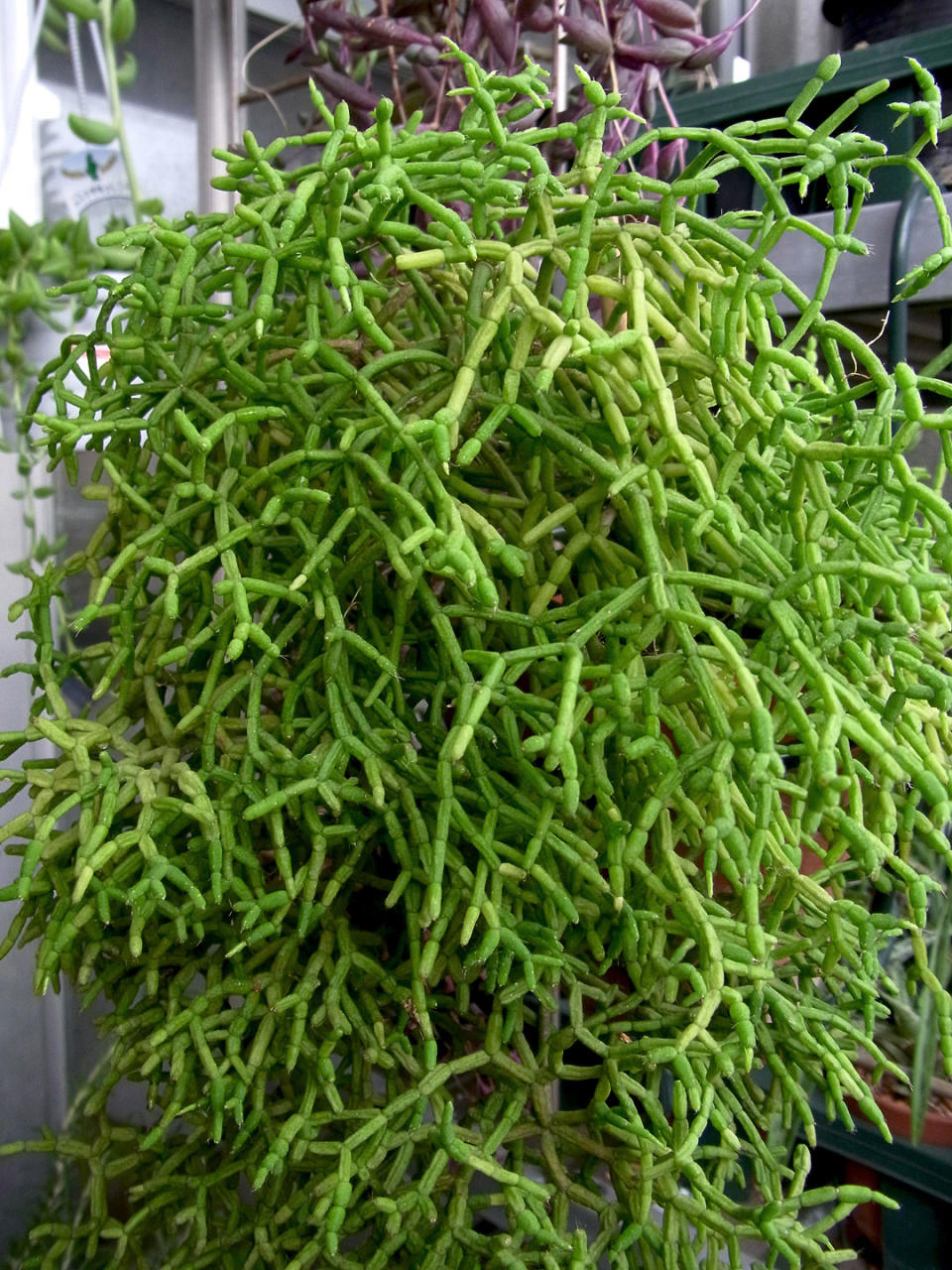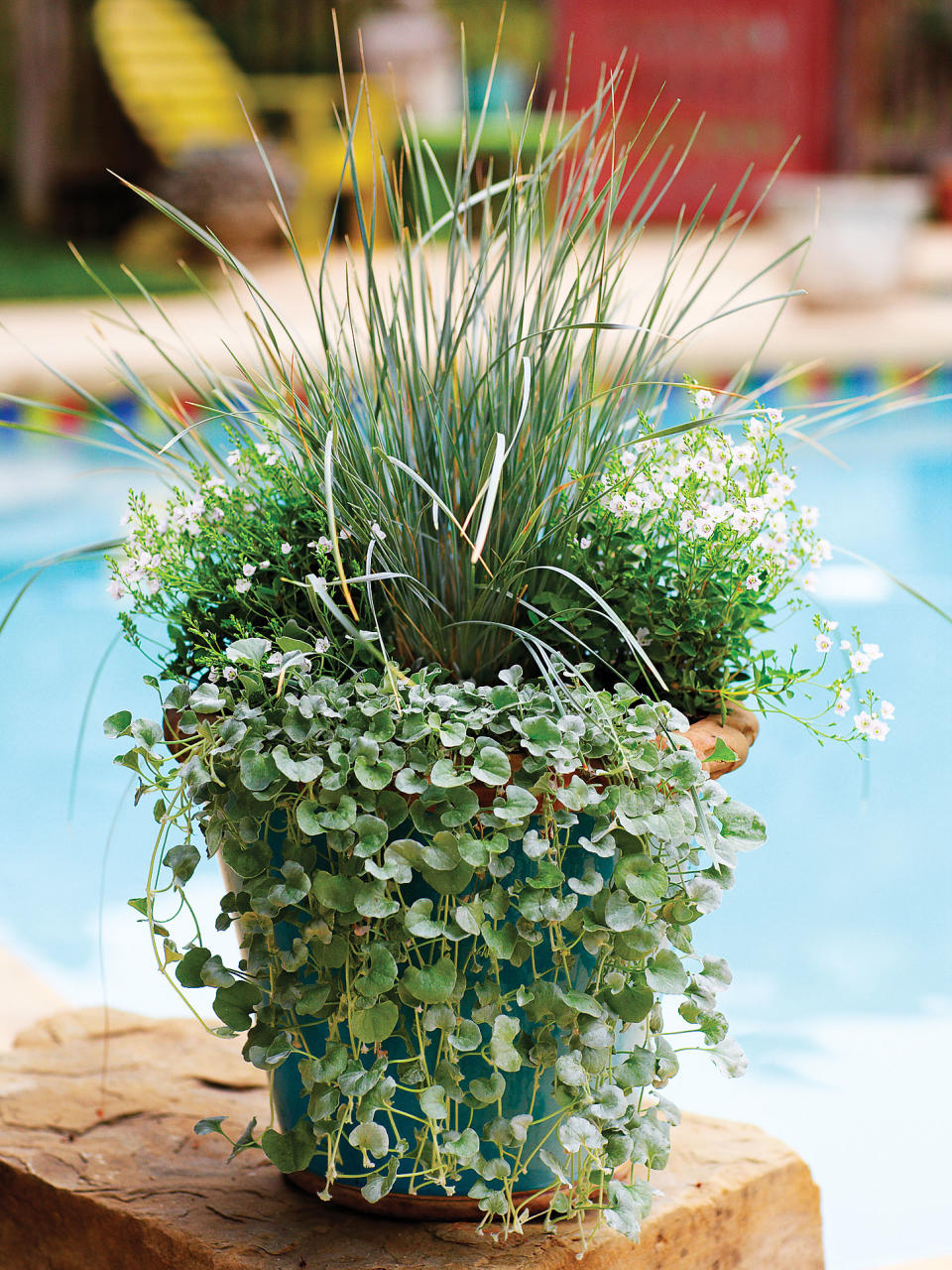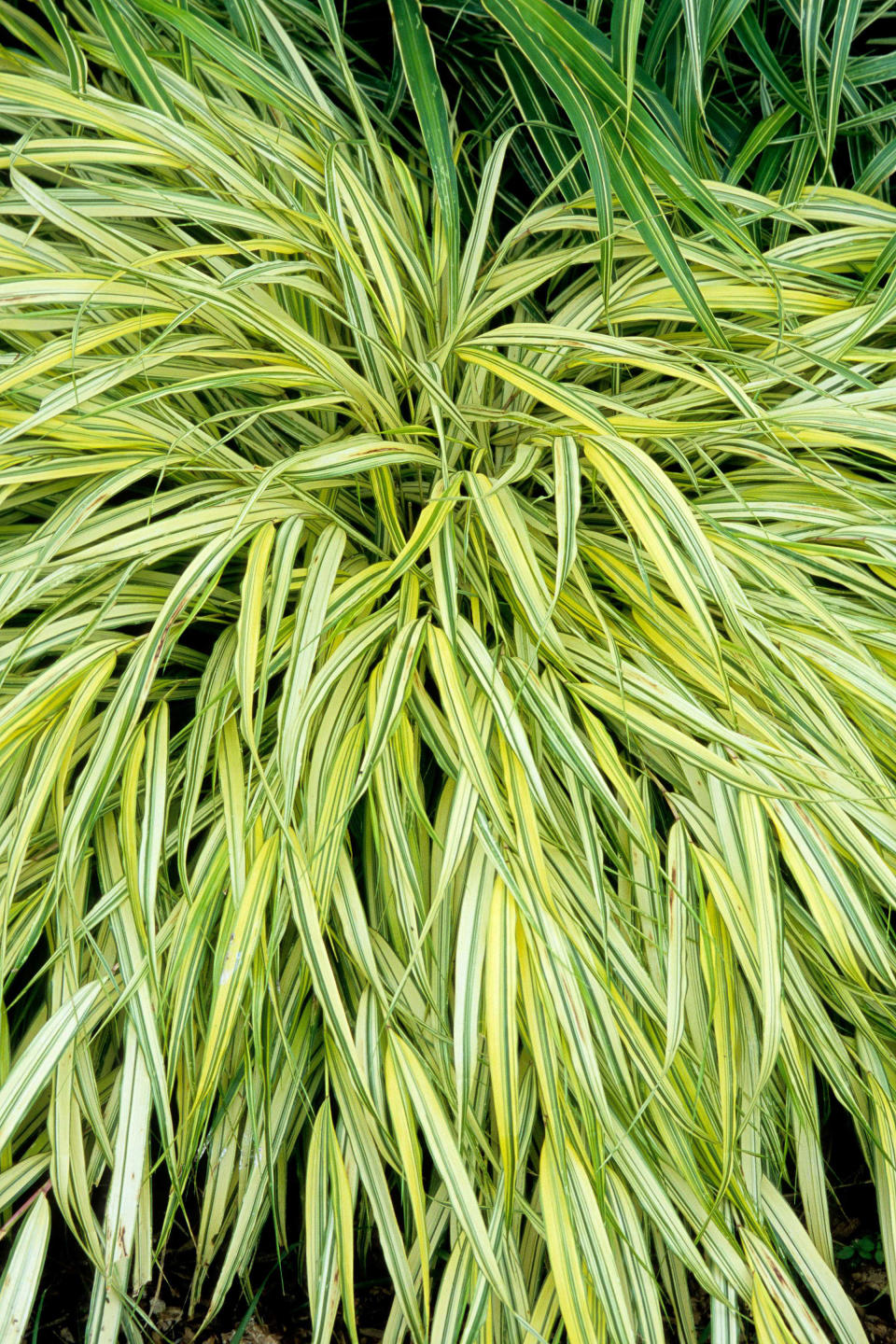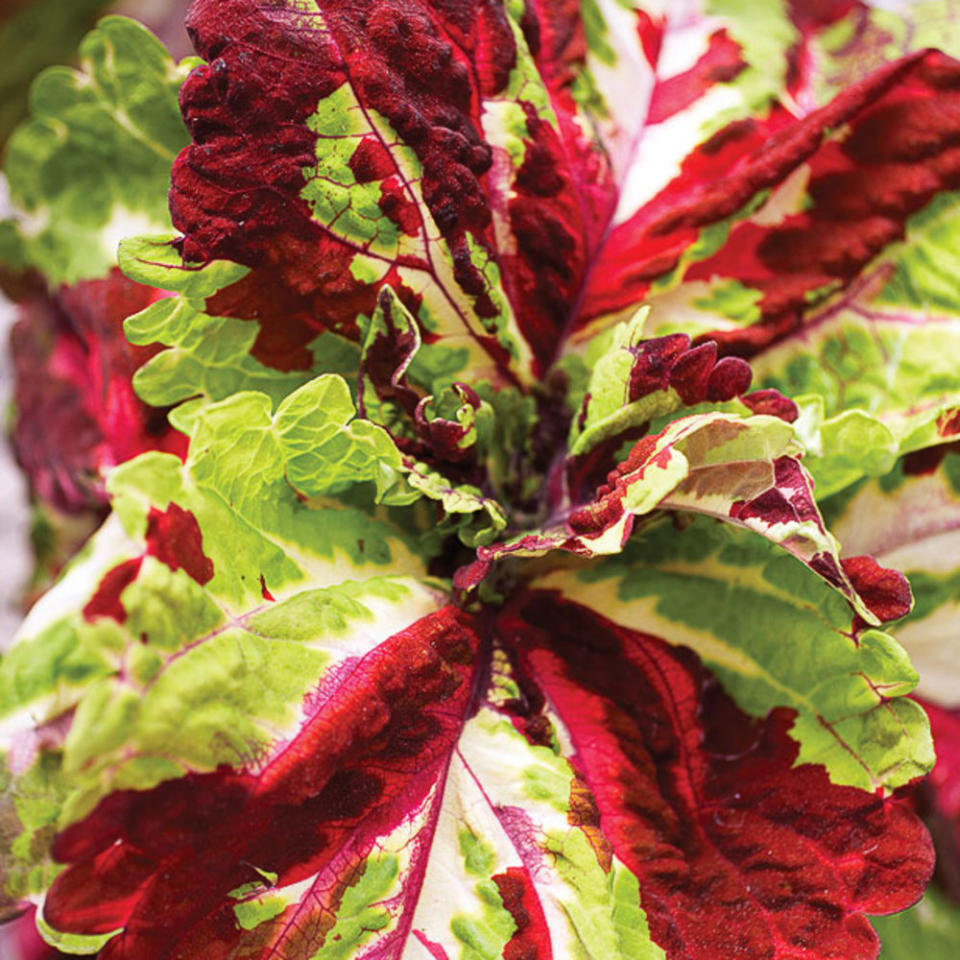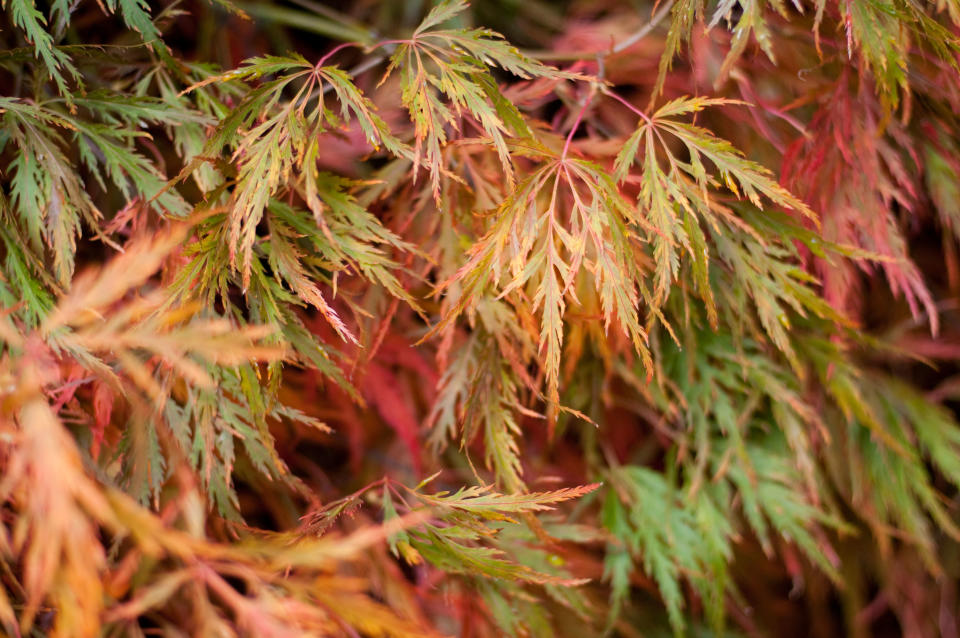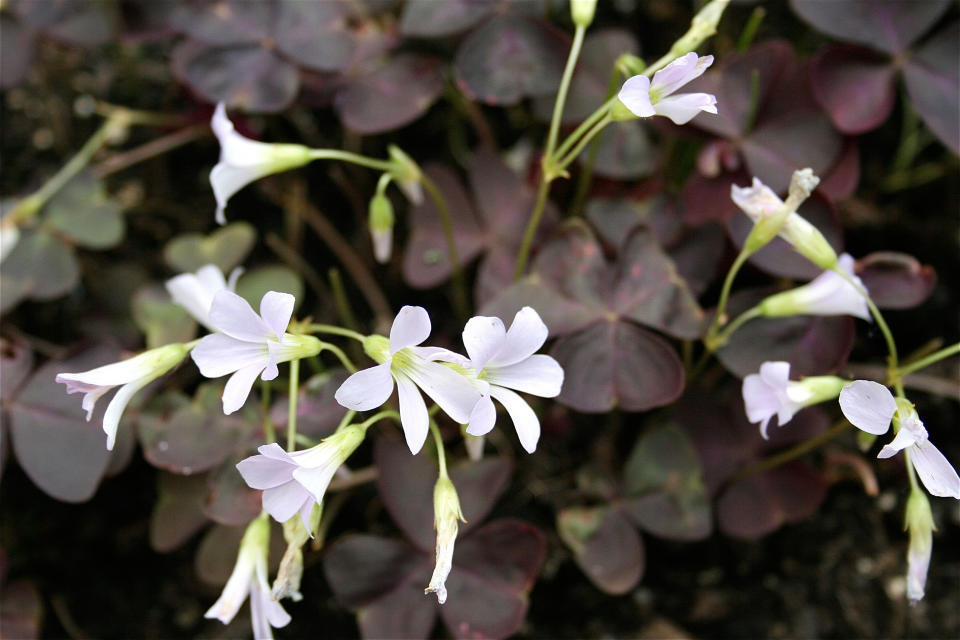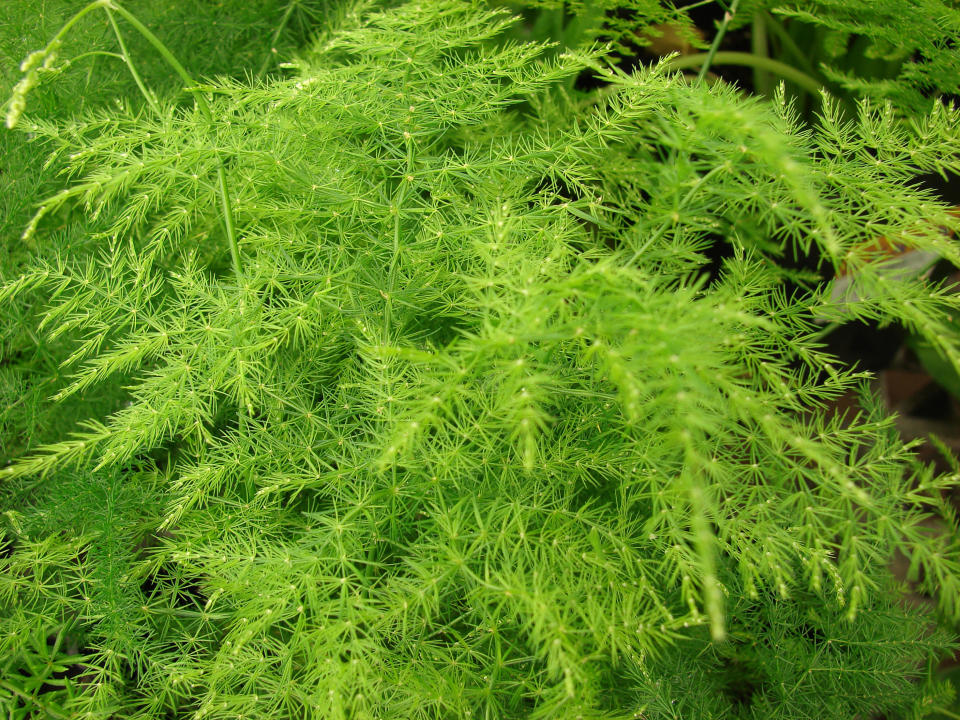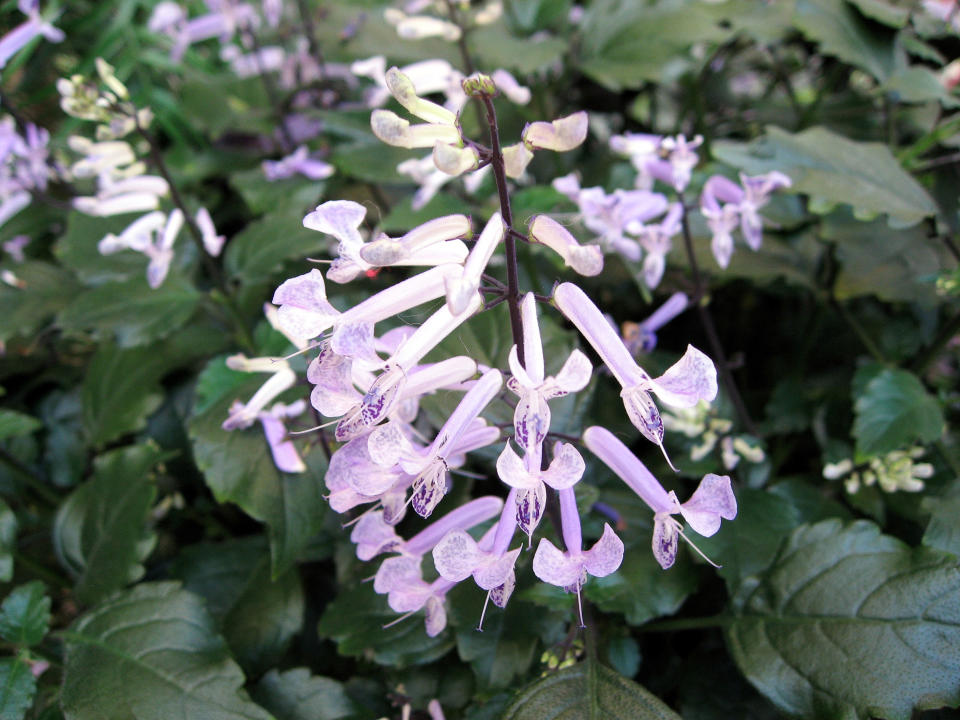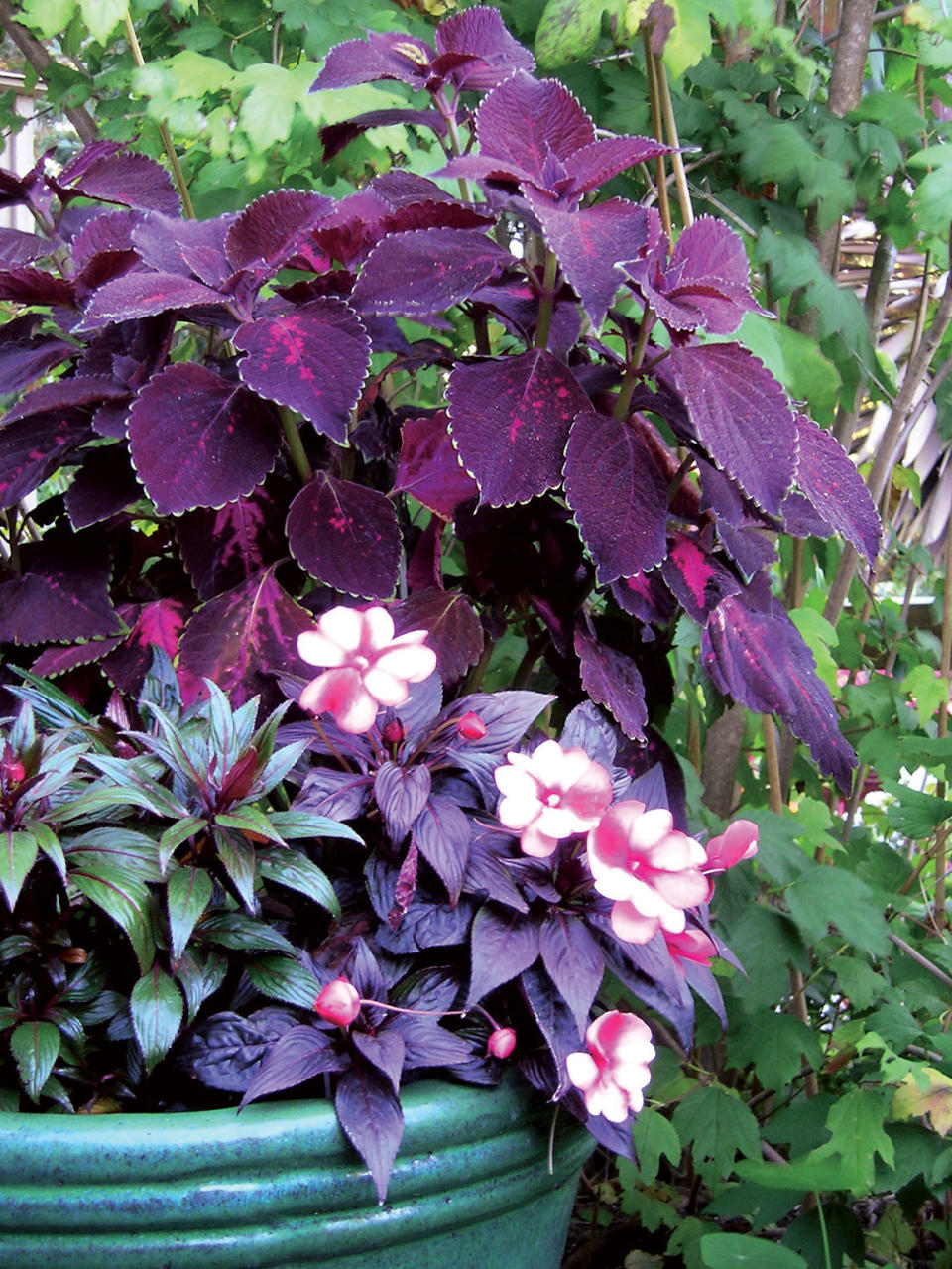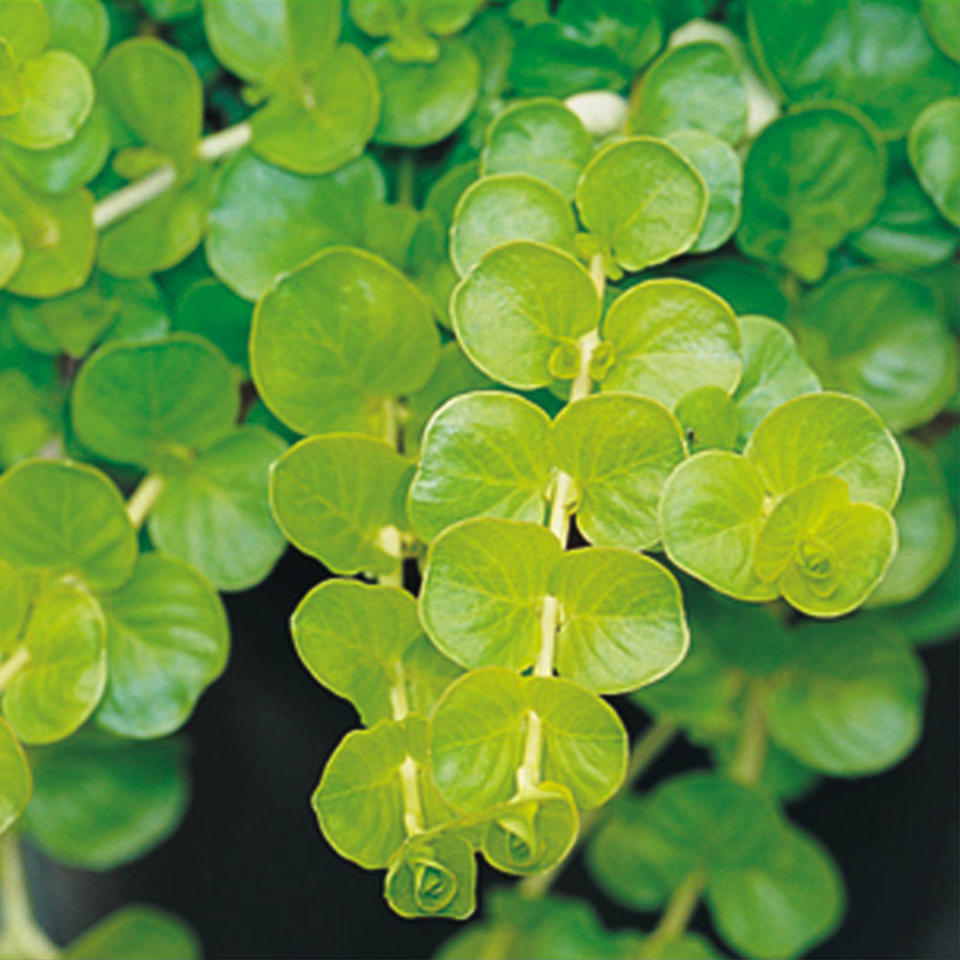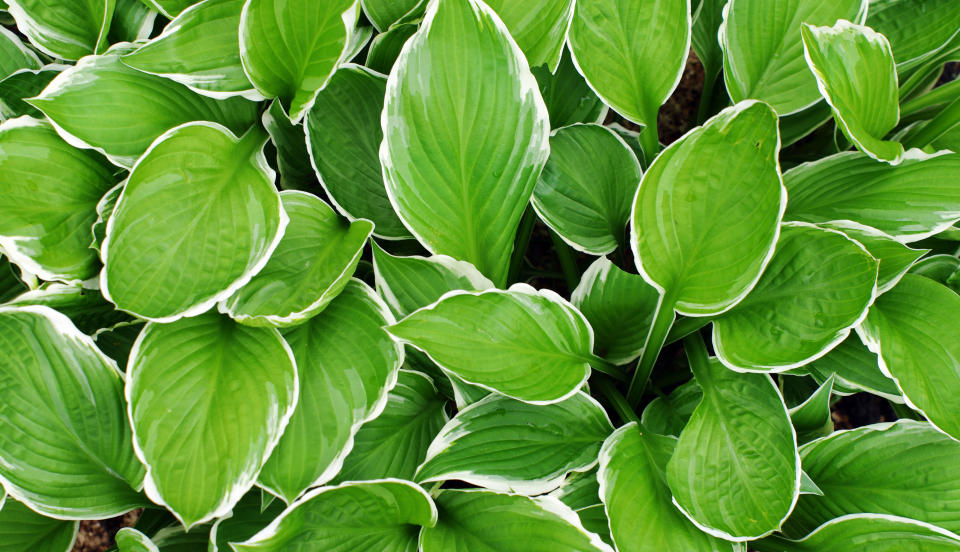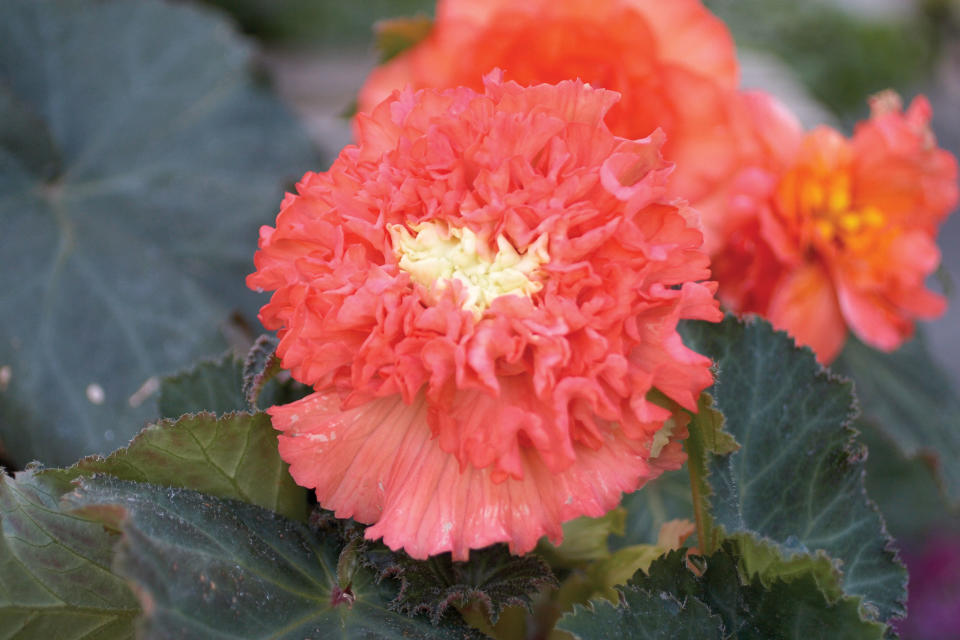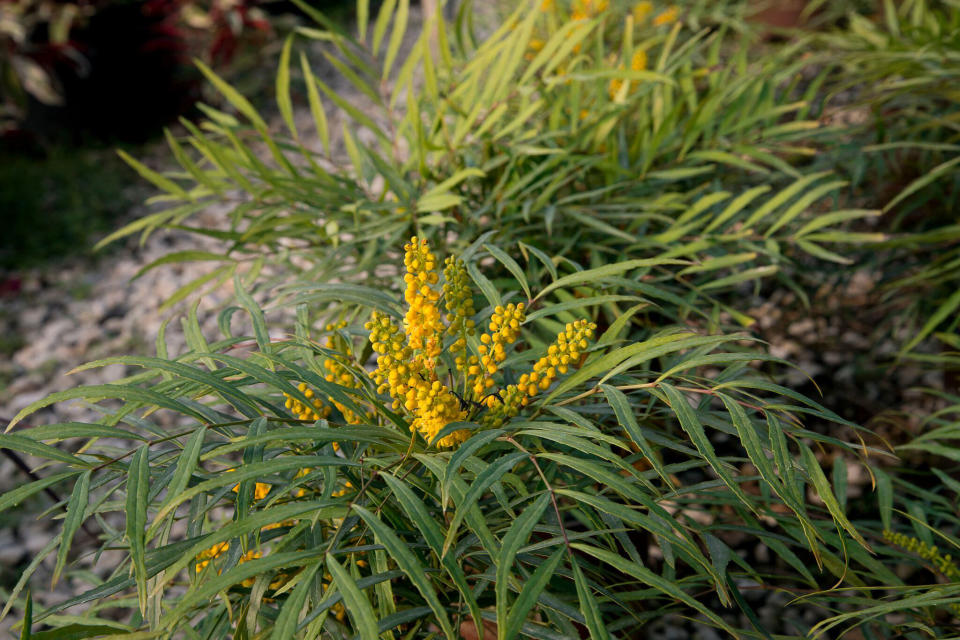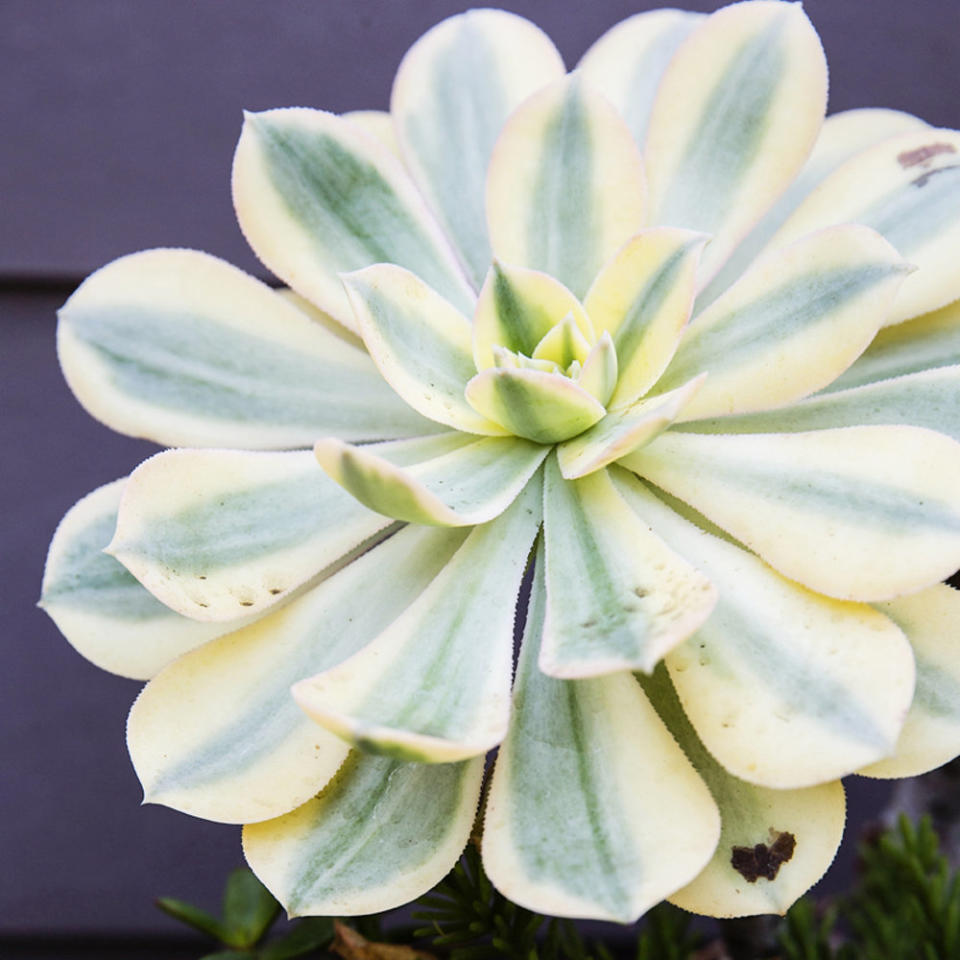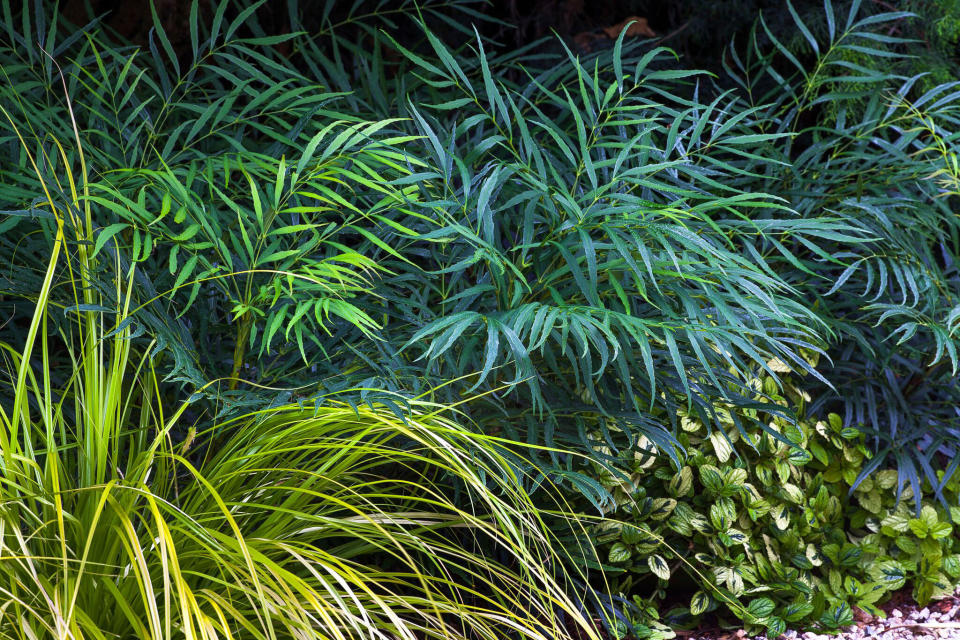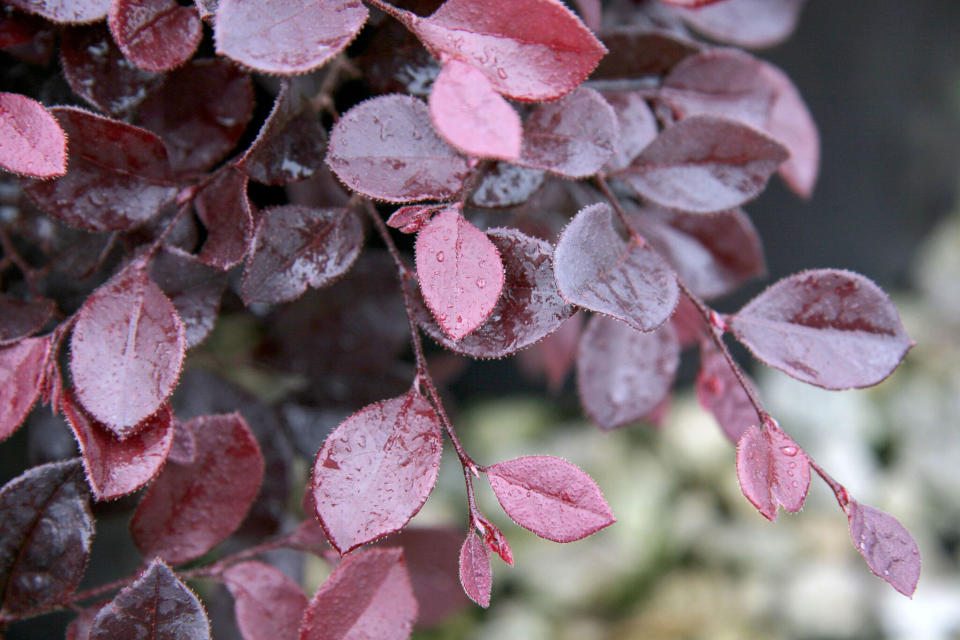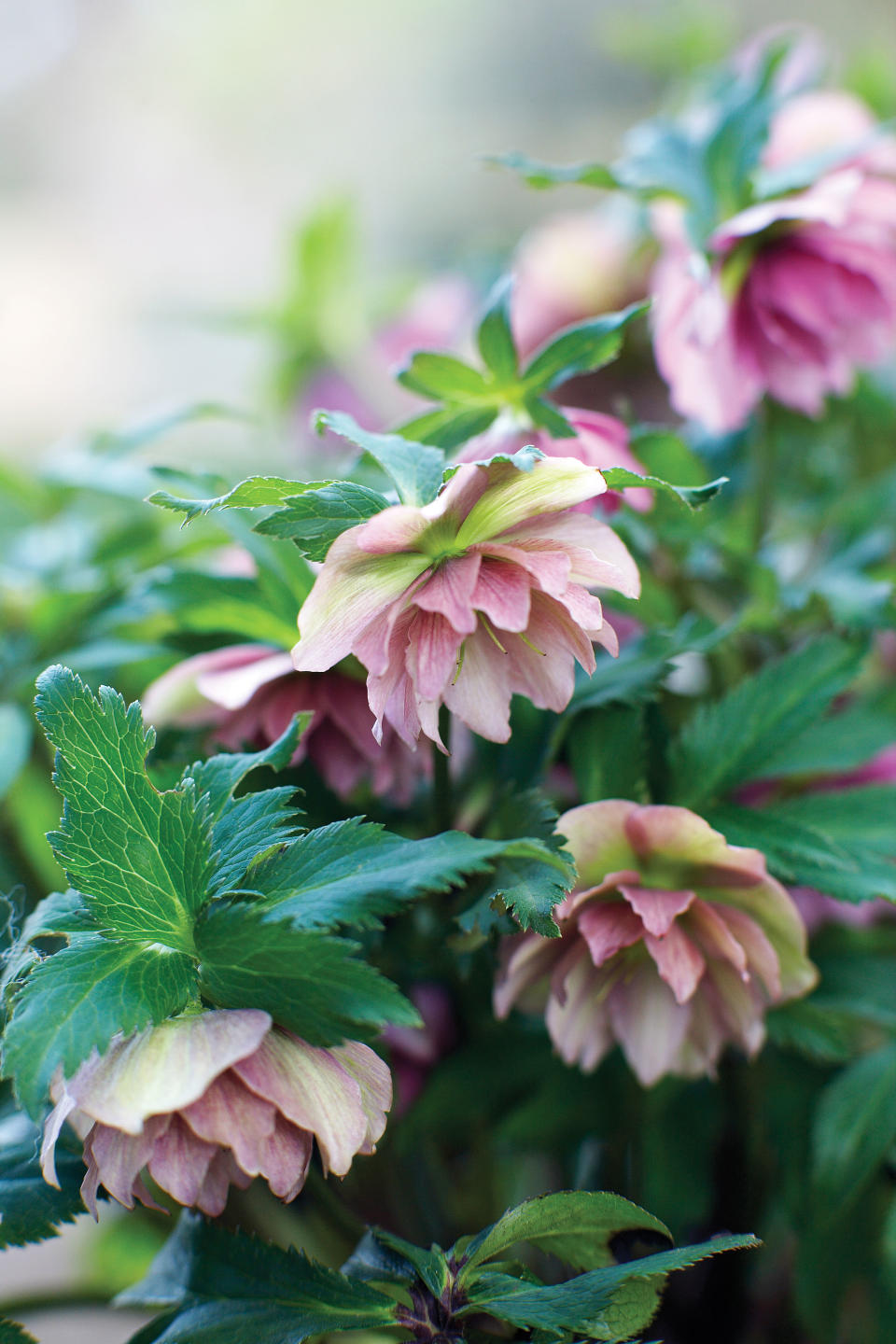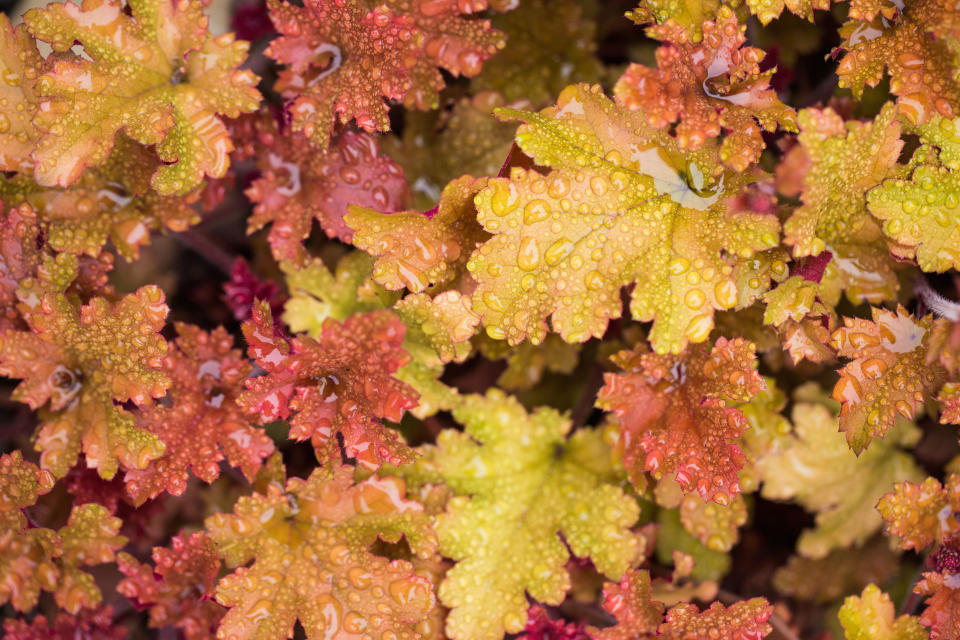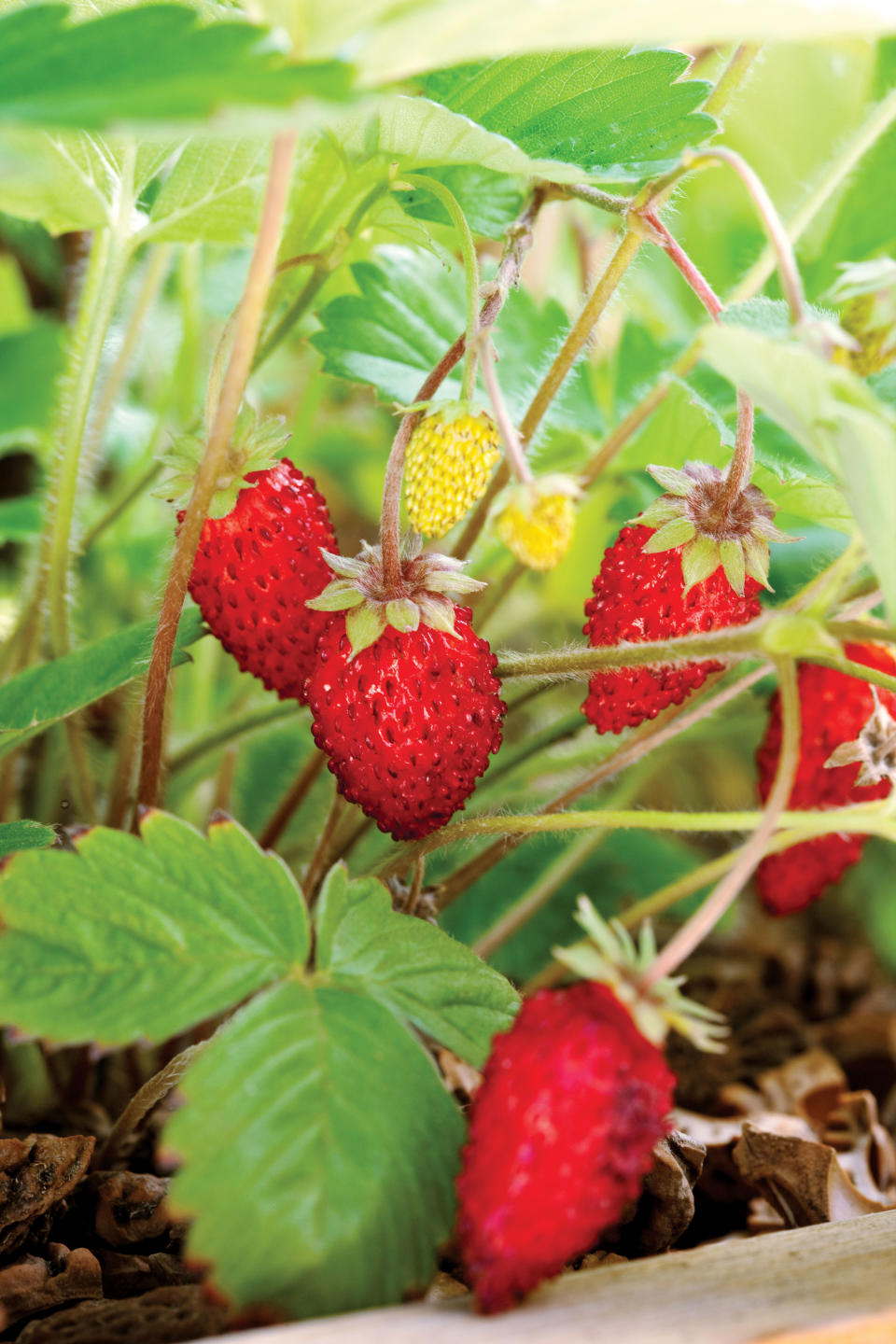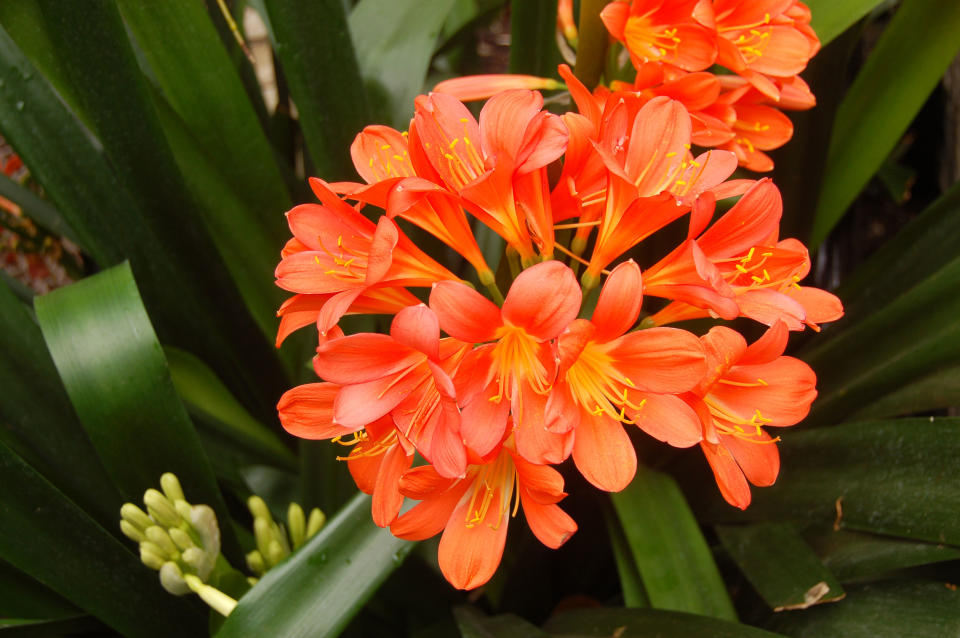20 Best Shade Plants for Containers
A container garden is the ultimate accessory for your porch, patio, or doorstep. These plants will keep you in style, even in the shade
Sunset
1 of 21 Sunset
Advertisement
Creative Commons photo by salchu is licensed under CC BY 2.0
2 of 21 Creative Commons photo by salchu is licensed under CC BY 2.0
Rice cactus (Rhipsalis cereuscula)
With drooping, pencil-thin stems in sections that look like grains, this tropical succulent is a great plant for hanging containers in the mildest of climates. It needs full to part shade, plus well-drained soil. Keep water even during spring and summer, but don’t allow plants to sit in standing water. Cut back on water from the fall through winter, as this is the plant’s dormant season. During this time, water just enough to keep the plant from shriveling. This plant can survive in outside temperatures of 60 degrees or higher.
Advertisement
Rob D. Brodman
3 of 21 Rob D. Brodman
‘Silver Falls’ Dichondra (Dichondra argentea ‘Silver Falls’)
This low-growing, eye-caching, shimmering plant looks great as a trailer hanging over the edge of a container or window box in partial shade. Heart-shapedleaves are covered with silvery down, as are the stems. It needs regular water, and can be treated as an annual in colder environments.
Advertisement
Terra Nova
4 of 21 Terra Nova
‘Aureola’ Japanese forest grass (Hakonechloa macra ‘Aureola’)
Clumps of gracefully arching leaves characterize this choice grass from Japan. Reaches 1 to 3 feet tall. Tolerates sun in fog belt or cool northwestern gardens, but a great choice for shade gardens and containers. ‘Aureola’ keeps its bright chartreuse color in dense shade; sunlight makes it paler. Keep it happy with regular water.
Advertisement
5 of 21
Coleus (Solenostemon scutellarioides)
This group of tropical plants is grown for brilliantly colored foliage. They are perennial in frost-free regions, but you’ll get the best performance by starting with new plants annually. Blue flower spikes are attractive, but they spoil the plant’s shape and are best pinched out in bud (this also encourages more vigorous leaf growth). Plants need regular water to be happy.
Advertisement
Courtesy of Bailey Nurseries, Inc.
6 of 21 Courtesy of Bailey Nurseries, Inc.
Japanese maple (Acer palmatum)
Japanese maples are naturally small to medium-size trees that can thrive in containers. Varieties with weeping branches and finely cut leaves are great choices. They grow slowly into graceful mounds. To keep a potted maple thriving, be sure to plant it in a container with a diameter a couple of inches wider than the root ball, and wider than it is tall. While the tree is young, transplant it every second year into a slightly larger pot, adding fresh potting soil. After the tree is 8 years old, repot it into the same container every 5 years, removing the outer 3 inches of root and replacing the soil each time. Apply a 10-10-10 fertilizer when the first leaves appear in spring, and monthly through August.
Advertisement
Creative Commons photo by Fluffymuppet is licensed under CC BY 2.0
7 of 21 Creative Commons photo by Fluffymuppet is licensed under CC BY 2.0
False shamrock (Oxalis triangularis)
Pretty purple flowers and dainty flowers make this plant an excellent choice for outdoor containers in mild-winter climates. Keep it in light shade with moist, well-draining soil. This is a great indoor plant, too.
Advertisement
Creative Commons photo by Forest and Kim Starr is licensed under CC BY 2.0
8 of 21 Creative Commons photo by Forest and Kim Starr is licensed under CC BY 2.0
Ornamental asparagus
Most ornamental asparagus look greenest in partial shade but thrive in sun in cool-summer climates. Leaves will yellow in dense shade. Plant in well-draining soil amended with peat moss or ground bark. Because of fleshy roots, plants can go for some time without water, but they grow better when watered regularly. Asparagus fern (not a true fern) is the most common of the bunch, with tiny threadlike leaves that form feathery dark green sprays.
Advertisement
Creative Commons photo by Beautifulcataya is licensed under CC BY 2.0
9 of 21 Creative Commons photo by Beautifulcataya is licensed under CC BY 2.0
Plectranthus ‘Mona Lavender’
This perennial reaches 2 feet tall and wide, forming a rounded bush. The plant has dark green, glossy leaves with purple undersides, and blooms that are lavender. While it can handle full sun along the coast, this plant is happiest in light shade. It needs well-drained soil and regular water. Promote better branching and more compact habit by pinching tips regularly. It will tolerate a light frost, but is generally considered a tender perennial.
Advertisement
10 of 21
Impatiens
Of all the impatiens out there, in a dizzying array of color choices, we’re partial to the New Guinea hybrids for their large leaves and 3-inch-wide flowers of pink, lavender, purple, red, and more. The vibrant orange-flowered New Guineas are positively sizzling in chocolate-brown containers. To edge shaded borders, go for the low- growing Busy Lizzie impatiens, which cover themselves in 2-inch-wide, five-petaled flowers in nearly every color but blue.
Advertisement
Photo via Proven Winners
11 of 21 Photo via Proven Winners
Creeping Jenny (Lysimachia nummularia 'Aurea')
Roundish chartreuse leaves and yellow flowers on trailing stems make Creeping Jenny, a mat-forming perennial, ideal for softening the edges of tall urns or hanging baskets. We grow it in an olive green glazed pot, where it spills out around a yellow-flowered abutilon. In the ground, it grows 4 to 8 inches tall, and spreads to 2 feet—rooting as it goes.
Advertisement
Photo via Proven Winners
12 of 21 Photo via Proven Winners
Hosta hybrids
Hostas come in a virtual wardrobe of shapes, textures, and colors. Depending on variety, their leaves may be heart-shaped, round, oval, or lance-shaped; glossy or dull; smooth or quilted; blue, green, or yellow. We especially love the cool, bluish green ‘Sagae’ (pictured); it grows 2 feet tall, and makes a stunning accent in a blue-green glazed container. The perennial also sends up white flowers in late summer.
Advertisement
13 of 21
Begonia (Tuberous)
For sizzling color in pots and hanging baskets, it’s hard to beat these perennials—each blooms as flouncy and vibrant as a Mexican dancer’s skirt. Flowers come in every shade but blue. Hanging types bloom more profusely, but upright strains have larger flowers—you choose. These begonias grow best in filtered shade and rich soil; water them enough to keep the soil moist but not soggy, and mist regularly.
Advertisement
Courtesy of Sunset Western Garden Collection
14 of 21 Courtesy of Sunset Western Garden Collection
Mahonia ‘Soft Caress’
'Soft Caress' has everything we love about Mahonia, without the pesky thorns! Compact enough to use in containers, yet large enough for foundation plantings or borders, they provide fabulous texture to the shade garden. Expect bright yellow flowers from fall through early spring. The plant will take part sun to full shade, and eventually reaches 3 feet tall and wide. Available through our Sunset Western Garden Collection.
Advertisement
15 of 21
Aeonium
All aeoniums have fleshy leaves held in rosettes at branch tips and come in a variety of colors. Variegated forms or fully green ones will thrive better in shade than dark purple types. After several years, rosettes may produce a single large flower stalk in spring or summer; branches that have flowered die. These cool-season growers go dormant in summer to save water. During dormancy, they may appear sick and lose leaves, but when the weather cools and the plants get a little water, they perk up and regrow leaves. Plant them in well-drained soil. Be sure to cut back on irrigation in summer. With age, most aeoniums grow leggy. To encourage branching, cut back branches several inches below rosettes anytime except during summer dormancy. Rosettes tend to be smaller after growing out from pruning.
Advertisement
Courtesy of Sunset Western Garden Collection
16 of 21 Courtesy of Sunset Western Garden Collection
Carex ‘Everillo’
Everillo wins our best plant for brightening up shady spots, or for adding a pop of color to a mixed container. It boasts bright, colorful foliage year round, and will grow to 1½ feet tall and wide. This easy-care evergreen grass can be used as a groundcover, to edge a path or patio, or tucked into a living wall or window box. Available through our Sunset Western Garden Collection.
Advertisement
Courtesy of Sunset Western Garden Collection
17 of 21 Courtesy of Sunset Western Garden Collection
Loropetalum 'Purple Pixie'
This is the only weeping Loropetalum. Easy-to-grow, low-maintenance dwarf shrub holds rich purple foliage year-round. 'Purple Pixie' grows just 1 foot tall and 4 to 5 feet wide, making it great as a border edger, in mass plantings, on slopes or cascading over retaining walls. It adds vibrant color spilling over containers and hanging baskets. Available through our Sunset Western Garden Collection.
Advertisement
Rob D. Brodman
18 of 21 Rob D. Brodman
Hellebore
Covered in blooms that range from pale green and creamy white to ruby, garnet, and deep amethyst, hellebores are at their prettiest from winter into spring, when their delicate flowers open like cups or bells amid leathery green leaves. Hellebores range from 1 to 3 feet tall and wide, and can tolerate drought once established (after two years). Mulch plants with aged compost in spring and fall (keep it away from the plant's crown), and you won’t need any supplemental fertilizer. These shade-loving perennials add sparkle any time of year, whether in pots or in garden beds.
Advertisement
Courtesy of Terra Nova Nurseries, Inc.
19 of 21 Courtesy of Terra Nova Nurseries, Inc.
Heuchera
These charming evergreen clumps of roundish leaves with lobed or scalloped edges come in every color under the sun, from purple with silver veins to chartreuse to coral, making them extremely useful in a shady garden. Atop mounds, slender stems bear loose clusters of bell-shaped flowers. Use in rock gardens or as groundcover, mass in garden borders or in front of shrubs. Heuchera make great container plants, especially when combined with other perennials for shade. If watered until established, Heuchera can withstand the dry shade under the canopy of trees or eaves.
Advertisement
Courtesy of Annie's Annuals & Perennials
20 of 21 Courtesy of Annie's Annuals & Perennials
Woodland strawberry (Fragaria vesca californica)
This is a choice groundcover for dry shade. Runners quickly establish a mat of strawberry leaves, while white flowers develop into smal, tasty red fruits. Clumps grow to 4 inches tall and as wide as you want; consider planting in a hanging basket or along a retaining wall to let runners cascade downwards.
Advertisement
Creative Commons photo by Tim Waters is licensed under CC BY 2.0
21 of 21 Creative Commons photo by Tim Waters is licensed under CC BY 2.0
Bush lily (Clivia miniata)
Great in borders, beds, or containers, plants produce brilliant, large clusters of funnel-shaped orange flowers on 2-foot stalks that appear above dense clumps of dark green, strap-shaped foliage. The flowering period ranges from early winter to mid-spring, but most or spring bloomers. Ornamental red berries follow the flowers. Grow them in frostless areas or well-protected parts of the garden. In areas too cold for year-round outdoor culture, grow in pots and move to shelter or indoors in winter. While they need regular water when flowering, Clivia prefer to be on the dry side and are a great choice to plant under oak trees in coastal California.
Advertisement

